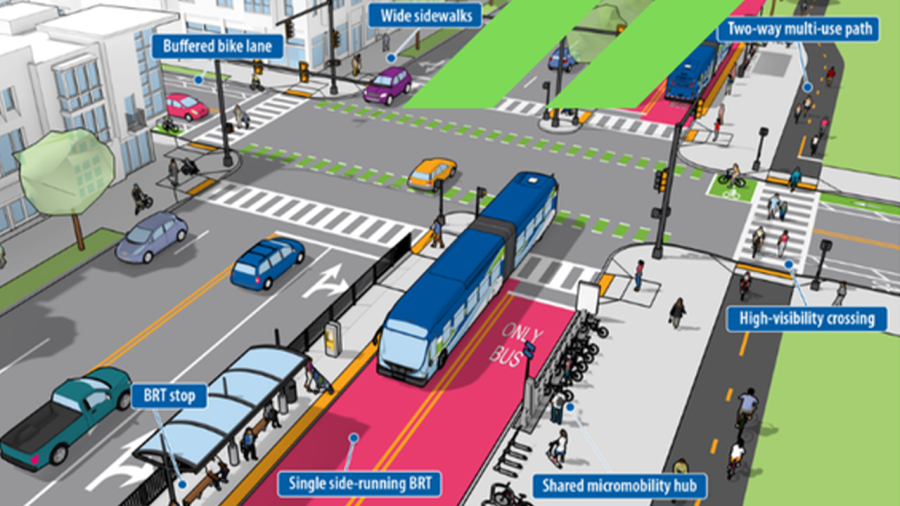COLUMBUS, Ohio (WCMH) — Some Ohioans in November’s general election will have the chance to decide whether Issue 47 passes, a COTA sales tax levy that would help fund a new public transit system and over 150 miles of sidewalks, bike paths, and trails.
Issue 47 is on the ballot in all of the Central Ohio Transit Authority’s service areas. If passed, it would increase the COTA sales tax in all areas it services from 0.5% to 1%. That money would help fund LinkUS, the city’s nearly $2 billion plan with COTA to modernize its public transportation options by introducing bus rapid transit.
Also known as BRT, the bus-based transit system is used in other big cities across the U.S., including Indianapolis and Minneapolis. It uses articulated buses — often referred to as slinky buses, accordion buses or tandem buses — that travel through dedicated transit lines. Currently, LinkUS is planning to introduce three bus rapid transit corridors, located on West Broad Street, East Main Street and Northwest. The plan also calls for 83 projects that would add more sidewalks, bike paths and trails throughout the region.

A “yes” vote would be in support of the tax increase, and a “no” vote would keep taxes as they are.
Why vote yes?
The main argument for Issue 47 is that it would help bring Columbus up to speed with other big cities. Columbus is the largest city in the U.S. without a mass transit system, city leaders have noted when advocating for LinkUS. While not light rail, bus rapid transit has been touted as a strong first step toward more reliable public transportation and is a cheaper alternative.
City leaders have argued that bus rapid transit would lead to reduced traffic. It would include a new center lane exclusively reserved for buses, meaning drivers wouldn’t get stuck behind COTA buses as often. Additionally, intersections along the route will be retrofitted to alter traffic as the buses approach, reducing the amount of time vehicles wait at a stop light.
It would also help Columbus in its goal of becoming a more walkable city. An average of $60 million per year would be provided for a bevy of sidewalk, bike path and trail projects, which LinkUS calls “transit-supportive infrastructure.” With millions of people expected to move to central Ohio by 2050, local agencies hope to add more than 500 miles of bike and pedestrian paths by then. A total of 40 communities came together to select the 83 projects.
Why vote no?
The main argument against Issue 47 is that it would raise the sales tax in all of COTA’s service areas. While an 0.5% increase only means an extra 50 cents added on to every $100 spent, it would bring Franklin County’s sales tax rate to 8%, tied with Cuyahoga County for the highest in the state.
Another criticism of the plan is that it’s not light rail, the preferred transit system of many other cities across the U.S. Light rail is a form of rapid transit that operates electric-powered single cars or short trains on fixed rails, running along highway medians or on streets with at-grade intersections. City leaders have said Columbus doesn’t have the density for light rail and wouldn’t be able to receive the federal dollars for it.
Voters could also be hesitant about the challenges that come with implementing three bus rapid transit corridors, and 83 sidewalk, bike path and trail projects. The work that it would take to create the infrastructure necessary for LinkUS, such as dedicated transit lanes, could lead to construction and cause a temporary strain on traffic. But overall, BRT is said to reduce traffic congestion.











